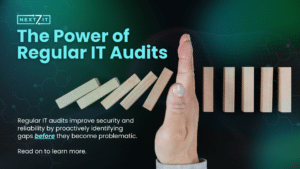It’s unfortunately become fairly common practice for attackers to prey on their victims through the use of cybercrime. One of the most popular forms of attack is phishing. Attackers, posing as legitimate individuals or companies, will attempt to obtain sensitive information like your username, password, credit card information, and more, often by inviting you to click on a malicious link or attachment, and sometimes even QR codes can lead to malicious links.
However, despite cybercrime being on the rise, it is entirely possible to avoid phishing attacks and other forms of cybercrime. By equipping yourself with the know-how around cyber attacks, you can prevent them and stop them in their tracks. Whether you’re an individual or a business, it’s imperative you understand how to detect a potential attack, and how to avoid it.
Preventing Phishing Attacks:
What Is a Phishing Attack
Phishing attacks are a common form of cybercrime where attackers will in most cases attempt to inject malicious files onto their victim’s computers in an attempt to steal personal, or worse, a business’s personal data.
Many phishing attacks will be disguised as an email from your bank, or another company that you know and trust, making you think that you are clicking a link, or entering data for a reputable company.
In some cases, the email might not include a bogus link, and instead may just try and trick you into giving them personal data, that they can then steal and benefit from.
While falling victim to a phishing attack can be devastating, there are a few precautions you can take to reduce the chances of being affected.
How to Prevent Falling Victim to Phishing
Most phishing attacks come in the form of a disguised email, although there are many cases where people are targeted through calls, texts, messages, and even apps such as WhatsApp. Thankfully there are a few ways to reduce your chances of becoming a victim of phishing.
Be Wary of Clicking Links in Emails or Texts
As mentioned above, the most common form of phishing is through a malicious link, which is often injected into your computer after you click the link. The first line of defense against phishing attacks is checking any suspicious links in emails.
Before you click on any links, you should hover over them and have a look at the destination. If the link doesn’t match the company’s URL, there’s a higher risk that this could be a malicious link. For example, any links that are included in an email from your bank would always send you to the bank’s actual URL, not a third-party URL.
There are many services out there that can even help you scan your emails, offering you real-time monitoring of your emails, network, and much more.
IT Security & MonitoringCheck the Sender’s Email Address
It’s not only links that might seem a little suspicious when it comes to phishing attacks. Of course, most attacks will disguise themselves as another company, but since they do not actually work for that company, they are not able to send emails from that domain.
For example, if you had a genuine email from Chase Bank, you would expect the email to end with @chase.com. However, if you got an email from [email protected] this would be highly suspicious, as the domain is incorrect.
If you’re ever in doubt, search for the company’s listed email address and report the suspicious email to them. Or if you have a dedicated IT help desk, speak with them to help verify the email’s authenticity.
Help Desk IT SupportKeep Your Software Up to Date
In some cases, mistakes can easily be made, a link may be well disguised or a form may have seemed extremely convincing. Thankfully, there are some other steps you can take to prevent damage in the event of a phishing attack.
One of the most important steps is to keep all your software up-to-date. Your operating system and other software will include security patches designed to help keep you secure from such attacks. While they might not always help, they will at least help reduce the risk.
Managed IT ServicesEstablish a Reporting Culture
Phishing attacks can be devastating for small businesses, which is why it’s important for staff to be trained to be vigilant when it comes to clicking links or opening attachments from unknown sources.
Building a reporting culture where staff report any suspicious emails, links, or attachments to management, or IT teams can be one of the most successful ways to keep your business safe online.
Implement DNS Filtering
You can block access to specific websites for specific purposes by using DNS filtering. For example, if you don’t want your employees to access a certain category of websites, you can choose to filter these, e.g. gambling.
Being able to limit the number of threats across your network is essential. Using DNS filtering, you can potentially stop malware in its tracks. On the flip side of the coin, you may also notice increased productivity if your staff are not distracted by browsing the internet.
Be Aware of LinkedIn Impersonations
Connecting with colleagues or your boss via LinkedIn is common practice. It’s a good way to expand your network, but it’s also a great place for scammers to impersonate others in order to get you to reveal personal and sensitive information.
Although LinkedIn now has an identity verification program, not everyone is aware of this. Even users who are verified can be difficult to spot due to the small verification budget next to a user’s name on their profile. Unfortunately, the number of fake LinkedIn profiles is increasing, with profiles that look believable, impersonating companies and individuals.
By connecting with a cybercriminal on LinkedIn, you open up the opportunity for them to contact you. Spear phishing campaigns are on the rise, too, with people impersonating LinkedIn to target job seekers. You can avoid these attacks by being extra vigilant when connecting with others on the platform; check out their profile before accepting a connection, using Google’s reverse image search to ensure their profile picture isn’t used elsewhere, and find out when a profile was created using the “about this profile” feature.
Phishing Attacks Can Be Avoided
Phishing attacks are rapidly becoming one of the most prevalent threats to businesses and even people at home, but keeping informed and staying vigilant, while making sure to take preventive measures can stop cyber criminals in their tracks.
You might be too busy to check links in great detail before clicking on them, but just remember, not staying vigilant and clicking on a malicious link could cost you much more than time, making it well worth the extra time to check an email’s validity before interacting with it.
Using a dedicated IT support desk, or managed IT service provider can be one of the best ways to save yourself time, and make sure you never fall victim to cybercrime.
Phishing FAQs
What’s the Difference Between Smishing and Phishing?
Smishing and Phishing are very similar, with the main difference being that phishing attacks target you through email, while smishing attacks target you through text messages, including apps such as WhatsApp.
There are also vishing attacks, where the attack comes through a phone call or VOIP call.
Is Phishing a Malicious Code?
In many cases, yes. The most common type of phishing attack these days uses malicious code to infect your computer and steal personal data.
Can Windows Defender Remove Malicious Code Following an Attack?
In some cases, but as cyber attacks have become much more sophisticated over the years, you might want to consider contacting your IT team to check your system instead of relying solely on Windows Defender or other security software.




